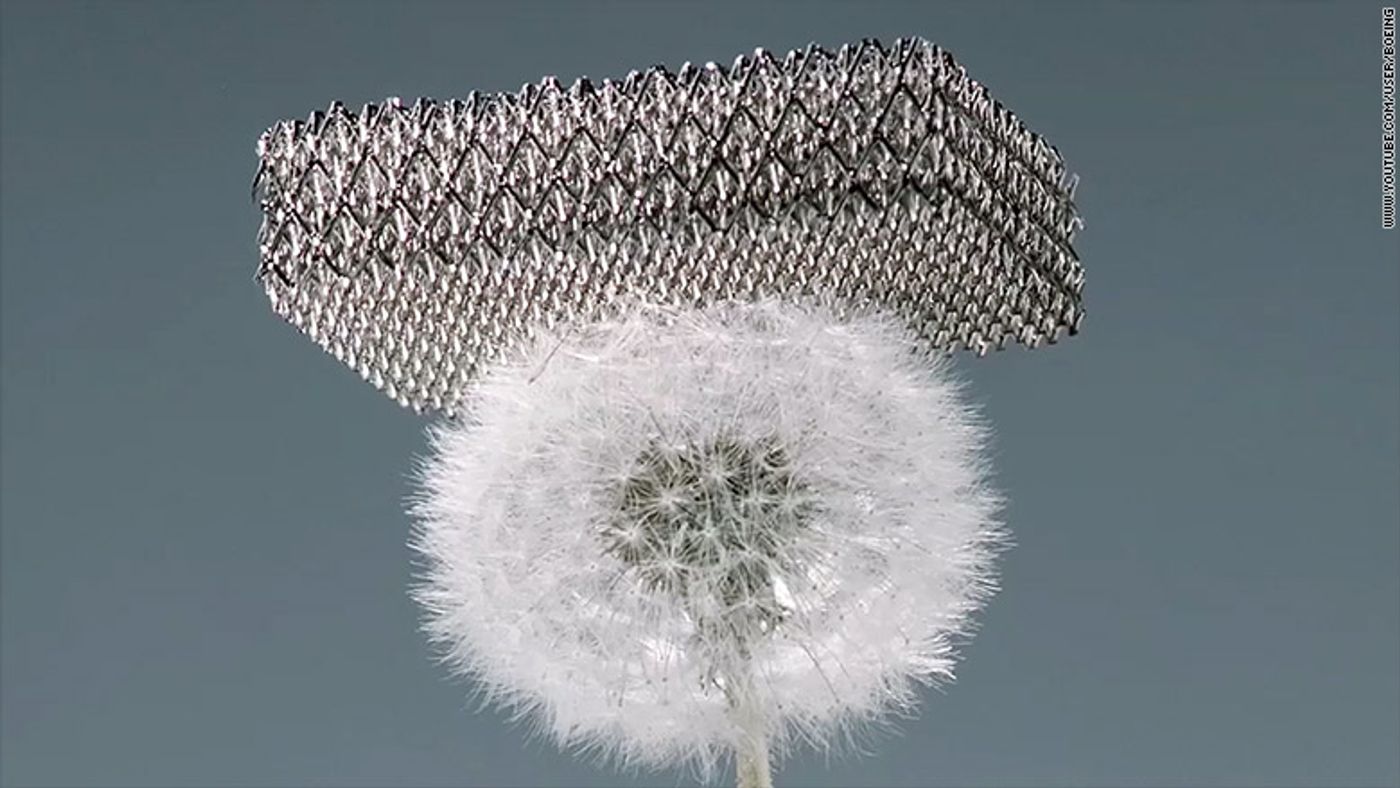Boeing Shows Off its Lighter-Than-Styrofoam Microlattice Metal
Boeing, the airplane manufacturing company that builds for massive air travel companies, claims to have created the world’s lightest metal, which the company refers to as ‘Microlattice.’
It’s an ultra-light mesh-like open cellular polymer structure of metal nano-tubes made out of a nickel-phosphorous alloy, which is 99% air, the company claims. It’s possible that the new ultra-light material could find some important uses on board of airplanes to drastically reduce the weight of the vehicle.
The nano-tubes are 100 nanometers thick and 100 micrometers in diameter. The material is so light that you can drop it, and it will float down to the ground slowly instead of crashing down like anything else would, and it can even sit on top of a dandelion without crushing the seeds of the plant.

"It’s sort of like a feather -- it floats down, and its terminal velocity depends on the density," said Bill Carter, manager of the architected materials group at HRL. "It takes more than 10 seconds, for instance, for the lightest material we’ve made to fall if you drop it from shoulder height."
By having these nano-tubes interconnect in such a way, Microlattice offers an array of benefits from traditional solid metal. For example, when you want to make something that can absorb impact, Microlattice is definitely a great material to use for that particular need. With slightly thicker walls, a stiffer construction could be made, which still retains lightness in terms of scale, but may be more durable than the nano-tube version.
The idea behind Microlattice isn’t new; researchers from CalTech were the first to announce such a structure in 2011, although back then it was still only very much a conceptn, and Boeing appears to have finalized the process of manufacturing such a material.
Using such a lightweight material in airplanes could drastically improve fuel economy and reduce drag on the turbine engines, as a result, the engines may last longer and air travel companies could charge less for plane tickets because of the cheaper fuel costs.
There is still no idea of when the material will be adopted on commercial airplanes, although with Boeing making an official announcement, it may be within the decade, give or take a few years.
You can watch Boeing’s official promotional Microlattice video below:
Source: Boeing








